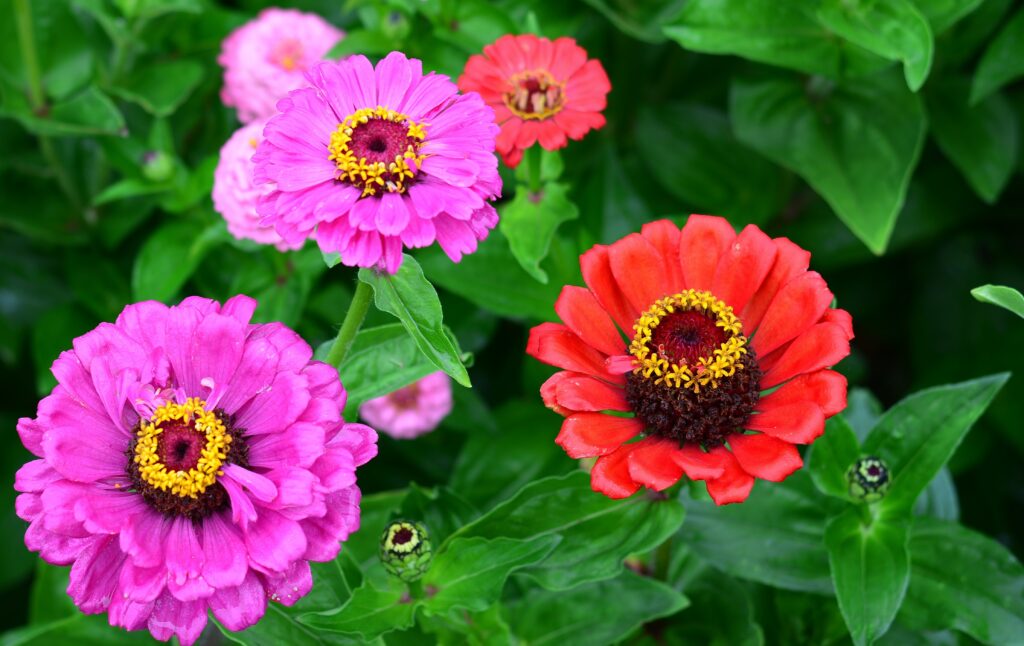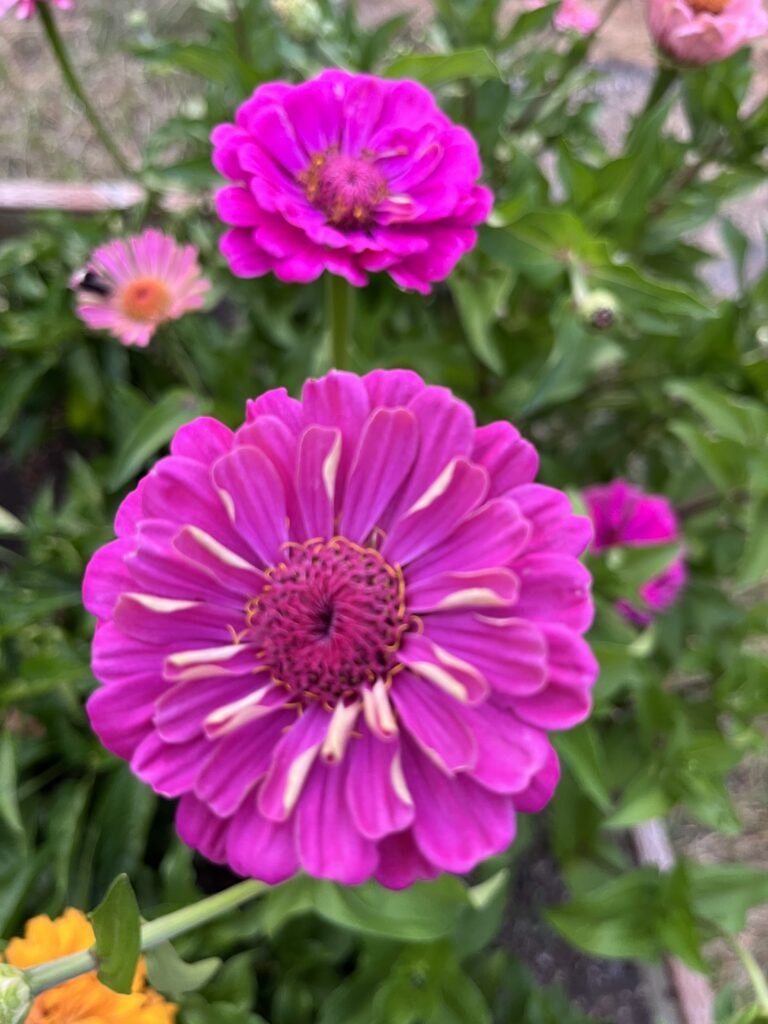




Published in the News-Review on December 13, 2024
“Deer-resistant Ornamental Plants’
By: Chris Rusch
Question: What can I plant in my landscape that will survive frequent deer browsing? Are some plants deer-resistant?
Answer: We all enjoy seeing deer, but they can be destructive to gardens, orchards, and landscaped areas. A deer-proof fence is the best insurance against deer damage, but landscaping with deer resistant plants is a more aesthetically pleasing alternative. When you call certain plants deer-resistant, it does not mean that deer will never eat them. Rather, the term is meant to call attention to plants that deer find less palatable than the other choices on its menu.
The tactic of planting deer-resistant plants allows you to play the odds through smart plant selection. If you grow plants that deer are less likely to eat, you can reduce your chances of browsing damage to your ornamentals. Most deer damage to plants occurs in late fall through early spring. The deer’s diet includes leaves, stems and buds of woody plants. Forbes (herbaceous plants) are eaten in the spring and summer when available. In the winter, deer are adapted to eating mostly woody materials and will eat almost anything. On average, a deer eats 2% to 4% of its body weight each day from plant materials.
Plants can be deer resistant for several reasons. Some plants are toxic to deer, while others produce strong smells that deer avoid. Most bulbs like daffodils, hyacinth, fritillaries, and crocus are all good bets for deer resistance.
Deer will avoid most ferns. Some ferns to try are:
- Dryopteris (aka wood ferns or male ferns) represent the largest group of garden-worthy ferns. The genus has a cosmopolitan range with perhaps as many as 400 species that are usually found in woodland habitats. Dryopteris erythrosora, autumn fern, is a stunning dwarf fern with a flush of young papery fronds that emerge a copper-red color, then mature to a deep green. They spread by underground stems.
- Polystichum munitum, western sword fern, is a large, evergreen fern with dark green fronds that is native to western North America.
Deer will avoid most ornamental grasses. Ornamental grass and grass-like plants are valued in home landscapes for their hardiness, ease of care, dramatic appearance, and the wide variety of colors, textures, and sizes available. Ornamental grasses refer to both true grasses and plants that have a grass-like appearance, such as sedges. Some popular landscape grasses include:
- Pennisetum orientale ‘Karly Rose’. This is a warm-season grass, beginning growth in the spring and then blooms mid to late summer. The soft pink spikes appear above the blue green foliage.
- Calamagrostis acutiflora ‘Karl Foerster’ (feather reed grass). This is a cool-season clump forming evergreen plant. It blooms in the late spring and rests during the heat of the summer. Other cool season grasses include fescues, blue oat grass and tufted hair grass.
- Hakonechloa macra ‘Aureola’ (Japanese forest grass). This is a shade loving deciduous perennial grass that forms dense, cascading mounds.
- Panicum virgatum (switchgrass). This beautiful grass has many varieties with showy flowers, excellent fall color, and winter interest. Switchgrass prefers the full sun in moist to wet soil but is highly adaptable.
Deer will avoid strongly scented, highly textured (sharp or fuzzy), or poisonous perennial plants such as: monkshood, anise hyssop, wormwood, wallflower, hellebore, Shasta daisy, lupine, rose campion, catmint, Russian sage, lungwort, and succulents. Some annual flowers are reasonably deer-resistant, including calendula, California poppy, sweet alyssum, and zinnia.
Shrubs that are aromatic, resinous/sticky, thorny/prickly or poisonous are the most reliable for deer resistance. Some recommendations include: barberry, silverberry, forsythia, kerria, beauty bush, boxwood, California lilac, Mexican orange, rock rose, daphne, leucothoe, pieris, Oregon grape, Pacific wax myrtle, evergreen huckleberry, and lavender.
Groundcovers that deer tend to avoid are: heather, bunchberry, cotoneaster, beach strawberry and salal.
For trees, it is always important to use a wire cage or trunk protector around any new tree to guard the bark from bucks rutting their antlers in fall and to prevent lower limbs/leaves from being chewed. Almost any deciduous tree is considered deer resistant once tall enough to be above browse height.
Deer may develop a taste for any new plant depending on the season, when it was planted, how much water and fertilizer it gets, and a host of other factors. In addition, young deer will basically eat anything they encounter as they learn about what is edible and what isn’t. You can also expect increased deer pressure during drought years or after a wildfire, when deer are desperate for something to eat. By planting deer-resistant plants, home gardeners can win some of the turf war with deer. When we understand what deer like and dislike, we can build a deer resistant garden and share our landscape with them.
Do you have a gardening question? Please email, call, or visit the Douglas County Master Gardener Plant Clinic at douglasmg@oregonstate.edu, 541-672-4461, or 1134 S.E. Douglas Ave., Roseburg

